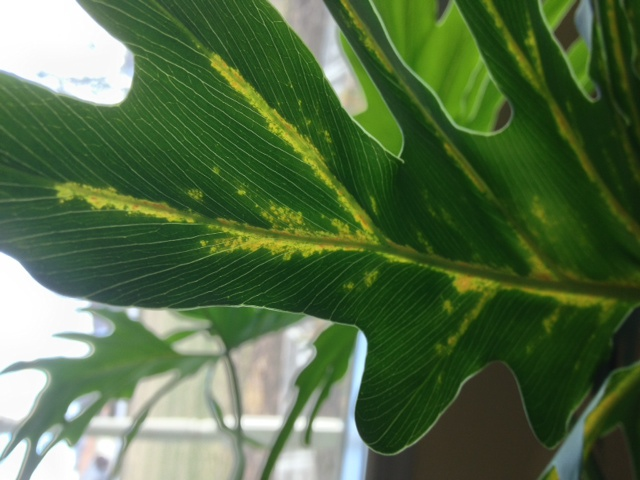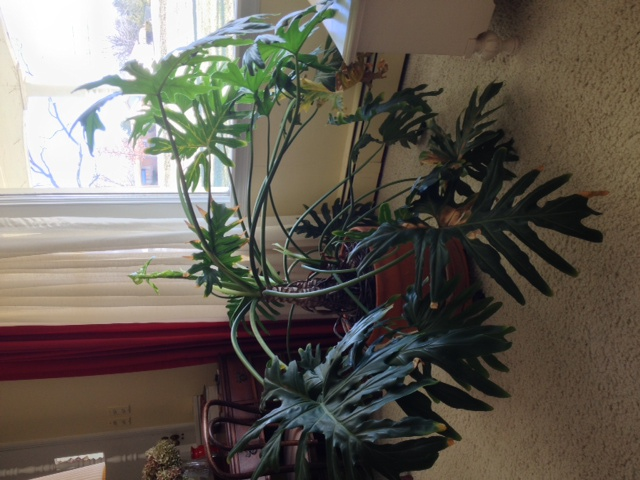Question
 Plant leaf
Plant leaf  Split leaf Philodendro
Split leaf Philodendro
I have a split-leaf philodendron that I've had for over 20 years which has done beautifully. It has three large trunks and continues to produce new leaves. It is rather large and has not been repotted for the last 5 -6 years or so as it's so large and heavy. Because of its size I can no longer get it outdoors during the summer so it is in an east window which gets an hour of direct sun for about an hour due to an overhanging porch roof and indirect light the rest of the day. I also use a grow light for several hours at night in winter months. This is not an ideal location as I don't think its getting enough light, but it is still producing new leaves but many of the older leaves which droop below the window sill aren't getting enough light tend to die. I have never fertilized it and give it a good water about once every 2-3 weeks and then about 1/2 cup daily. It has done well up until recently when the veins started having a discoloration and then the leaf would die. I can't find any evidence of pests.
I would love to be able to fix this problem and keep my sweet plant for another 20 years!!
Hope you can help.
AnswerHi Zoe,
Just to avoid any confusion, although your plant is a Philodendron and it does have split leaves, it is usually called tree Philodendron or Philodendron selloum. Its correct botanical name is Philodendron bipinnatifidum. "Split-leafed Philodendron" usually refers to a different plant species with split leaves and is known botanically as Monstera deliciosa. Although their care is similar, they are different plants.
The location you have for your Philodendron is almost ideal, so don't worry about improving the light or moving it outside. Likewise, its pot size is not an issue and it will probably never need to be repotted because it does best when kept potbound.
It is quite common for this plant to lose its older leaves as new leaves are added on top. In addition, older leaves tend to droop naturally due to gravity. After many years, you end up with a tree-like trunk with foliage at the top. Tall trunks can be cut back if they become too tall or start to lean severely. Rotate your plant so it grows straight.
I do suggest that you change your watering routine. Allow the top 1-2 inches of soil to dry thoroughly, then add enough water so that a small amount trickles through the drainage holes. Do not add any water again until the top 1-2 inches of soil dries out again. I also recommend that you fertilize monthly at half strength.
I have written an article on Philodendron care that I will email for free to you (or anyone else) who emails a request to me at
[email protected].
Please let me know if any of this is unclear or if you have any additional questions.
If this information has been helpful, please click the Rate Volunteer bar below and enter a rating and NOMINATION for me. I am a volunteer on this site so Ratings are the only compensation I receive for answering plant questions.
Need more information? Visit my website at:
A link to HorticulturalHelp.com
or email me at
[email protected] or call me at 917-887-8601 (EST)
Regards,
Will Creed, Interior Landscaper
Horticultural Help, NYC
Visit my website at: A link to HorticulturalHelp.com







